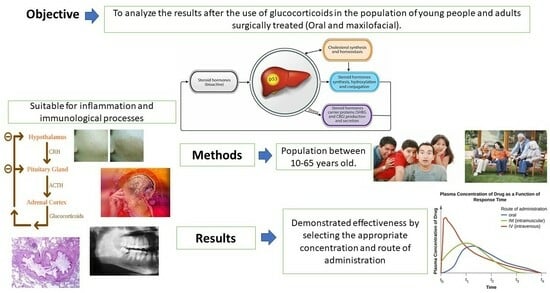Efficacy/Safety of the Use of Glucocorticoids in Oral and Maxillofacial Surgery
Abstract
Share and Cite
Nils, H.J.; Arce Recatala, C.; Castano, A.; Ribas, D.; Flores-Fraile, J. Efficacy/Safety of the Use of Glucocorticoids in Oral and Maxillofacial Surgery. Dent. J. 2023, 11, 239. https://doi.org/10.3390/dj11100239
Nils HJ, Arce Recatala C, Castano A, Ribas D, Flores-Fraile J. Efficacy/Safety of the Use of Glucocorticoids in Oral and Maxillofacial Surgery. Dentistry Journal. 2023; 11(10):239. https://doi.org/10.3390/dj11100239
Chicago/Turabian StyleNils, Heilyn Joanna, Cristina Arce Recatala, Antonio Castano, David Ribas, and Javier Flores-Fraile. 2023. "Efficacy/Safety of the Use of Glucocorticoids in Oral and Maxillofacial Surgery" Dentistry Journal 11, no. 10: 239. https://doi.org/10.3390/dj11100239
APA StyleNils, H. J., Arce Recatala, C., Castano, A., Ribas, D., & Flores-Fraile, J. (2023). Efficacy/Safety of the Use of Glucocorticoids in Oral and Maxillofacial Surgery. Dentistry Journal, 11(10), 239. https://doi.org/10.3390/dj11100239








